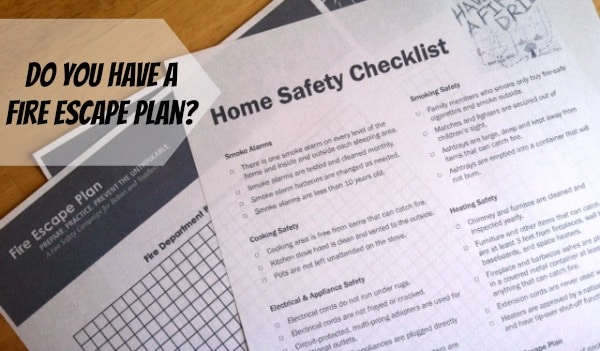
When is the last time you replaced the smoke alarms? Do you have a Fire Escape Plan in case your home is on fire? Those are two questions I asked myself a couple months ago, when evaluating how safe my family is while at home.

As a father/parent I know it is my responsibility to protect and prepare my family. I feel Staci and I have forewarned our kids of the possible dangers and outcomes of playing with fire. But, still in the back of my mind something can always happen outside my control. That is why I am taking an active stance of preparing in case of a household fire.
Children under age 5 are twice as likely to die in a fire as the rest of us. In fact, toddlers ages 3 to 4 actually cause a large number of home fires by playing with lighters and matches. – FEMA.GOV
Prepare
The best way to protect your family from a home fire is to have working smoke alarms. Since our family has Kidde Worry-Free smoke alarms, we will have protection for the next ten years, but we also need to make sure we know what to do if the smoke alarms sound and there is a fire in our home.
National Fire Protection Association (NFPA) statistics indicate that the primary reasons smoke alarms fail to operate in home structure fires is a missing/disconnected battery (50%) and dead/discharged battery (23%)
I was able to find tons of resources from my local fire departments website and U.S. Fire Administration site, I like a Home Safety Checklist and Fire Escape Plan Grid to map out your escape plan. I sat down with the whole family and explained the purpose of the fire escape plan. First, we drew out our house on the grid, and decided on a place to meet in case of a fire.
Some tips provided by the USFA and FEMA to consider when preparing your escape plan include:
- Draw a map of each level of your home and show all doors and windows. Find two ways to get out of each room. Make sure all doors and windows that lead outside open easily.
- Only purchase collapsible escape ladders evaluated by a recognized testing laboratory. Use the ladder only in a real emergency.
- Teach children how to escape on their own in case you cannot help them.
- Have a plan for everyone in your home who has a disability.
- Practice your fire escape plan at night and during the daytime.
Since we live in a two story house, we were a little worried about getting out of the house from the upstairs. So, after investing in a set of Kidde Escape Ladders and a couple practice runs, the kids feel confident to be able to set up and climb down by themselves.
***UPDATE – Kidde Fire Escape Ladders are intended for one-time use only as stated in the manual for safety purposes.***
We took the time that day to go through the Fire Escape Plan a couple times. We also watch a few fire protection videos, to help explain when it is safe to open closed doors. All in all, I feel Fire Escape Plan practice was a success, and we will do it again in about six months.
